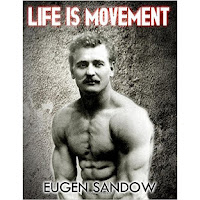Every goal should be unique to the client or athlete, just as no client or athlete is the same. Medical history, experience, lifestyle and occupation or sport all play a factor in determining or redefining one’s goals. No one method will work for each individual, which is why it is important as a coach to develop a large tool box. Do not get boxed into certain cults or camps in the strength and conditioning field. Develop that large tool box and be open minded to what other strength coaches have been successful with. There are many different methods of strength training that can fit under the same principle umbrella. Do not be afraid to use different methods of strength training responsibly.
There are many great methods that can be used based off the client or athlete’s goals. If you were training a Powerlifter with the goal of reaching the highest 1 rep max possible, one method to use is a low rep pyramid scheme with mainly barbells, covering the “big 3” (deadlift, squat, bench). The rep range for low rep pyramid training in the “Big 3” should stay 5 reps and under since in competition powerlifters never do more than 1 rep. A lower volume higher rest scheme should be implemented to ensure the powerlifter recovered enough to lift the most amount of weight each time. A barbell should be used in most exercises since mastering movements on a barbell takes practice to develop that specific skill that the sport demands. This is one great way to train a powerlifter, however not all trainees are powerlifters and would benefit the most from this training.
If you were training a basketball team with athletes whose goal is to prevent injury while gaining strength and some metabolic conditioning, High intensity strength training at one set to failure with all hammer strength machines is a great idea. Having the athletes train the full body with low volume and low rest at one set to failure will improve strength and metabolic conditioning. The use of machines is advantageous for athletes with abnormal body types such as most basketball players. Proper use of a good Hammer Strength leg press machine or a Squat Pro for a 6’5 athletes with narrow hips is safer and more productive then having the athlete barbell squat. The infrequent and short training sessions will give the athletes more time to develop their individual sport skills needed for playing basketball. High intensity strength training with 1 set to failure is great for some athletes, however it is not realistic to have everyone be able to train to momentary muscular failure.
Let’s say you’re training the average Joe who works 40 hours a week and wants to be a stronger more muscular version of him or herself, a Hardgainer approach that Stuart McRobert lays out perfectly in “Brawn” is a fantastic method. A twice a week lifting approach where the full body is trained each week with safe basic compound exercises for 2-3 sets. Long training cycles with small adjustments based off of individual performance is used with poundage progression, being the main goal, with short layoffs to cycle intensity. Infrequent strength training fits well into the 40-hour work week and allows for adequate recovery from a hectic schedule and for the average Joe to actually train. A realistic training intensity can be achieved where the trainee trains hard, yet are not forced to obliterate his/her self every workout. This allows for the trainee to build up to harder to more challenging training, while staying motivated. While, flexibility in training equipment and exercises permits the trainee to train at most gyms or at home. The list goes on: Dinosaur training for young fit motivated athletes, Olympic lifts for Olympic lifters, super slow for those with injuries or love to feel “the burn”, the tier system in a team atmosphere. All of these training methods has their place in strength training and should be matched properly with the client or athletes goal.
Countless coaches see great success in their clients and athletes with the practical application of many strength training methods. No two coaches have to be the same to be successful, just how there is no one right mode or method for everyone. Many methods of strength training can be productive as long as it fits ones’ strength training principles and matches the client’s goal. So the first step to deciding the proper strength training method is to ask “what is your goal?”

